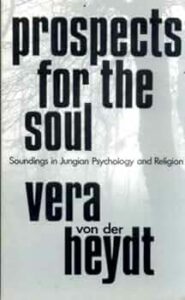Searching for self-acceptance and finding one’s own truth can be both wearying and exhilarating. For Vera von der Heydt there is always a centre within us to be found – but the route to it is individual, and for her the way was both through religion and analysis. What matters most she feels is the search, a search for a glimpse of where ‘the treasure’ is and reaching it or not is uncertain.
Both analysis and religion involve confession – in both the process of unfolding and developing one’s sense of who one is and then self-acceptance. The journey is a bit like a spiral. Sometimes there’s a sense of having found something – a breakthrough – only to find that it is lost again.
‘This is an experience which one gets to know quite well, but one plods on because one realises that the components of the psyche have to be analysed and scrutinised. The light of understanding has to be brought into the darkness of disorder, and then eventually a synthesis, in the shape of a different pattern, can emerge into consciousness.’
This is the process of inner transformation – as Jung said this is the greatest service that we can perform in our life. A process that will eventually show that we no longer need to split off parts of oneself, and in pretending they don’t exist because of horror and shame, end up projecting them onto others or groups of other people. In analysis we can look back and ask ‘why did this happen’. The inner searching helps us withdraw the projections and learn to differentiate between ourselves and others –this she sees is the heart of self-acceptance – being more secure in the value of our own being. Then it’s increasingly possible to have reactions and emotions instead of being possessed by them.
It’s then that we can ask a more religious question – which is ‘what did this happen for?’ a question which von der Heydt believes points not to the past but rather opens up the present, the now, and opens up the realm of purpose and meaning. This is the question which we should ask all through our lives, as the journey towards authenticity and self-acceptance is never completed and individuation never ends, though analysis as a treatment does.
Any descent to the underworld – here she means into the unconscious as in analysis is dangerous because of the power of the past to seduce us into staying with it – in the same way that visions about the future as in ‘Mine eyes have seen the glory of the coming of the Lord’ are enticing. Both are parts of life and are within each person and a fundamental pair of opposites which we have to come to terms with:
‘I have become very conscious of past joy and pain, and of fear and hope for the future in myself. I know that every day at every moment of the day these two have to be united in me, into the now of my life, into my present which is above time.’
